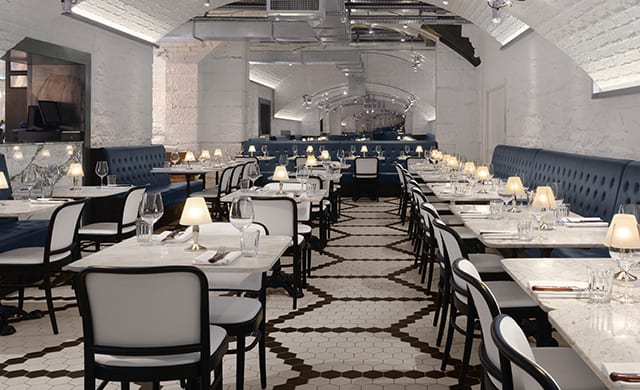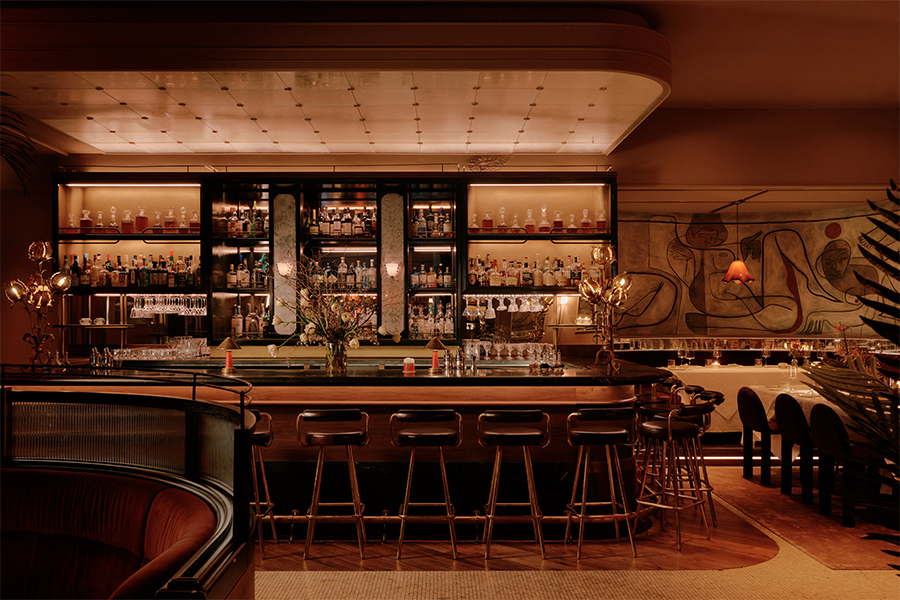A new restaurant and bar has instilled Scottish sensibility in the historical catacombs beneath Glasgow’s 1879-built Central Station. “Any new interventions were always going to take second place to the magnificent, muscular vaulted structure of the original Workman-like building,” says James Dilley, head of hospitality and interior design at London-based Jestico + Whiles, which completed the interiors.
As the station’s first restaurant, Alston Bar & Beef needed to draw passersby into the previously unoccupied subterranean level. A steel staircase leading down to the basement references the industrial age of rail travel in which the station was created. Along one of the original basalt walls, local design studio Timorous Beasties created a 26-foot-long mural. “The staircase itself also had to be an extravagant feature that caught the eye,” Dilley says. “It is a contemporary, elegant interpretation of a fire escape, designed to hold light in etched lenses, and the artwork is a thoughtful and respectful composition with some accents of electric color.” The laser-cut steel treads and risers have individually inserted circular lenses, which, when backlit, illuminate the piece’s intertwined thistles, hawk moths, and gin botanicals.
Original vaulted ceilings at the restaurant’s entrance are illuminated by solid cast glass pendants, referencing ceramic railway isolators. “The subtle, oblique lighting brings the texture of the light-deprived brickwork to life for the first time in 100 years,” Dilley says. Programmable colored lighting washes the white-painted arches at night to change the atmosphere. “The existing spaces formed by the vaults gave us the opportunity to create different moods without making the space feel dark,” he adds. “We appreciated the unique location and were keen to exploit the basement barrel vaults, which form the main restaurant and bar area.”
The entrance and backbar are focused on the largest gin collection in Scotland. Made of Arabascato marble, the glacial gin bar is set in the space’s first vault, each bottle illuminated by an under-lit, icy glow. Pendants made from reclaimed glass decanters brighten the nearby seating clusters, and the star-patterned mosaic tiled floors echo the design in traditional French brasseries.
Similar to a storefront, a window looking into the kitchen “frames a parade of aged meat with the theater of a kitchen and butcher, and all that it says about skill, freshness, and tradition,” explains Dilley. “The marble bar, the window to the kitchen, and the filigree industrial staircase with its Scottish mural were the only ‘events’ required to enhance the experience, but each of them had to be perfectly composed to complement or contrast.”



